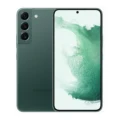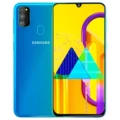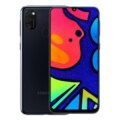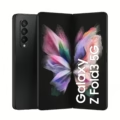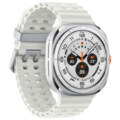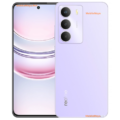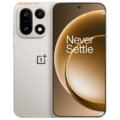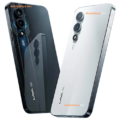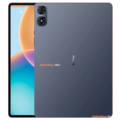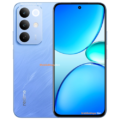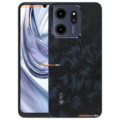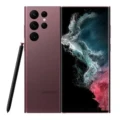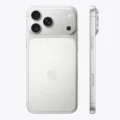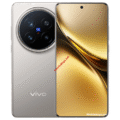Price List: Under Tk.5,000 | Tk.5001-10000 | Tk.10001-15000 | Tk.15001-20000 | Tk.20001-30000 | Tk.30001-40000 | More Mobiles
- Home
- All Mobile
- Samsung
- Samsung Galaxy S6 edge
Samsung Galaxy S6 edge
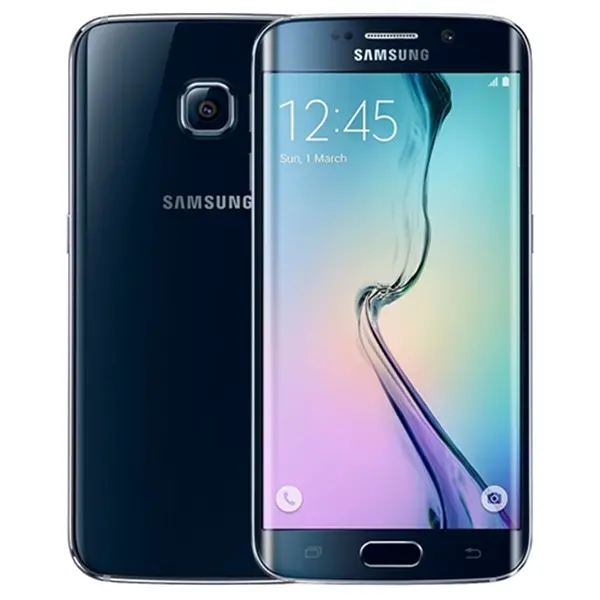


Specifications
Price in Bangladesh
| Official | 79,900 |
General
| Device Type | SmartPhone |
| Model | SM-G9250, SM-G925A, SM-G925F, SM-G925FQ, SM-G925I, SM-G925K, SM-G925L, SM-G925S, SM-G925T, SC-04G, 404SC, SM-G925D, SM-G925J |
| Announced | March, 2025 |
| Released | April, 2025 |
| Status | Available |
Hardware & Software
| Operating System OS => Every computer system run on a base software called Operating System (OS). Operating System controls all basic operations of the computer (such as smartphone, PDAs, tablet computers and other handheld devices). The Operating System allows the user to install and run third party applications (apps), apps are used to add new functionality to the device. | Android |
| OS Version | v5.0.2 (Lollipop) |
| User Interface UI or user interface of a device is the look and feel of the on-screen menu system. How it works, its color scheme, how it responds to button presses, all of these things are part of the user interface. | TouchWiz UI |
| Chipset Chipset is a group of integrated circuits designed to perform one or a more dedicated functions, often with real time computing constraints, Popular smartphones are equipped with more advanced embedded chipsets that can do many different tasks depending on their programming. | Exynos 7420 |
| CPU CPU (Central Processing Unit) mostly known as processors, CPU processes instructions in order to carry out certain functions that make your device operate properly. Processors are often described as the brain of computers, smartphones and tablets, Smartphones and tablets rely on processors to carry out their every task, Processors are an incredibly important factor in selecting any type of computing device, including your smartphone. | Octa core (2.1 GHz, Quad core, ARM Cortex A57 + 1.5 GHz, Quad core, Cortex A53) |
| CPU Cores | 8 Cores |
| Architecture | 64 bit |
| Fabrication | 14 nm |
| GPU GPU (Graphics Processing Unit) is a single-chip processor designed to rapidly manipulate and alter memory to accelerate the creation of images in a frame buffer intended for output to a display, This includes things such as lighting effects, object transformations, and 3D motion. | Mali-T760 MP8 |
| RAM (Memory) RAM (Random Access Memory) is a type of computer memory that can be accessed randomly, any byte of memory can be accessed without touching the preceding bytes that allows information to be stored and accessed quickly from random locations. RAM is the most common type of memory found in computer systems, smartphones, tablets and other electronic devices. | 3 GB |
Design
| Dimensions | 142.1 x 70.1 x 7 mm (5.59 x 2.76 x 0.28 in) |
| Weight | 132 g (4.66 oz) |
| Colors |
White Pearl, Black Sapphire, Gold Platinum, Green Emerald |
| Build Material | Glass front (Gorilla Glass 4), glass back (Gorilla Glass 4), aluminum frame |
Display
| Display Type Display Technology => A number of display technologies and types used in mobile phones => TFT (Thin Film Transistor), IPS (In-Place Switching), OLED (Organic Light Emitting Diode), AMOLED (Active-Matrix Organic Light-Emitting Diode), Super AMOLED (an even advanced version of AMOLED), Resistive Touchscreen (Resistive touchscreens contain two layer of conductive material with a very small gap between them which acts as a resistance), Capacitive Touchsceen (Capacitive touchscreen technology consists of a layer of glass coated with a transparent conductor) | Super AMOLED |
| Size | 5.1 inches (12.95 cm) |
| Resolution | 1440x2560 px (QHD (2k)) |
| Aspect Ratio | 16:9 |
| Pixel Density Pixel Density (PPI) is refers to the concentration of pixels on a particular display, measured in pixels per inch (ppi). Pixel density is calculated by dividing the diagonal pixel resolution of a display by its diagonal size, higher pixel density better display quality. | 576 ppi |
| Screen to Body Ratio | 71.82 % |
| Touch Screen | Capacitive Touchscreen, Multi-touch |
| Refresh Rate | 60 Hz |
| HDR 10 / HDR+ support |
Rear Camera
| Camera Setup | Single |
| Main Camera | 16 MP |
| Autofocus | Yes |
| OIS | |
| Flash Flash Light => There is commonly two types of flash lights are used in camera mobile phones, LED Flash (LED flash offers lower power consumption with drive circuitry that takes up very little room, LEDs can be strobed faster than any other light source), Xenon Flash (xenon flash produces an extremely intense full-spectrum white light for a very short duration) | LED Flash |
| Image | 5312 x 2988 Pixels |
| Settings | Exposure compensation, ISO control |
| Zoom | Digital Zoom |
| Shooting Modes | Continuous Shooting, High Dynamic Range mode (HDR) |
| Aperture | f/1.9 |
| Camera Features |
Auto Flash, Digital image stabilization, Face detection, Touch to focus |
| Video | 4K@30fps, 1080p@30/60fps, 720p@120fps, HDR, stereo sound rec., OIS, gyro-EIS |
| Video Recording Features | 3840x2160 , 1920x1080, 1280x720 |
| Video FPS | 30 fps, 60 fps, 120 fps |
Front Camera
| Camera Setup | Single |
| Secondary | 5 MP, f/1.9, 22mm (wide) |
| Aperture | f/1.9 |
| Video | 1440p@30fps |
| Video FPS | 30 fps |
Battery
| Battery Type Battery Type => Cell phones run on various kinds of batteries depending on the manufacturer, phone size or shape and features. There are basically four types of cell phone batteries => Lithium Polymer, Lithium Ion, Nickel Metal Hydride and Nickel Cadmium. | Li-Ion (Lithium Ion) |
| Placement | Non-Removable |
| Capacity Battery Capacity is a measure (typically in Amp-hr) of the charge stored by the battery, and is determined by the mass of active material contained in the battery. The battery capacity represents the maximum amount of energy that can be extracted from the battery under certain conditions. | 2600 mAh |
| Quick Charging | 15W wired |
| Wireless Charging Wireless Charging (Inductive Charging) uses an electromagnetic field to transfer energy between two objects. This is usually done with a charging station. Energy is sent through an inductive coupling to an electrical device, which can then use that energy to charge batteries or run the device. |
Wireless (Qi/PMA) (market dependent) |
| Talk Time Talk Time is the longest time that a single battery charge will last when you are constantly talking on the phone under perfect conditions, Ambient temperature and highly dependent on the cellular network environment such as the distance to the closest cell network tower. | Up to 18 Hours(3G) |
| Music Play | Up to 50 h |
Storage
| Storage Type | UFS 2.0 |
| Storage Capacity | 32 GB |
| USB OTG |
Network
| 2G Network |
GSM 850 / 900 / 1800 / 1900 |
| 3G Network |
HSDPA 850 / 900 / 1900 / 2100 |
| 4G Network |
1, 2, 3, 4, 5, 7, 8, 12, 17, 18, 19, 20, 26 |
| SIM SIM (Subscriber Identity Module) is a small card that contains mobile network subscriber's account information. This allows the phone using the card to attach to a mobile network. The SIM card is most commonly associated with GSM and UMTS mobile networks. Moving a SIM card from one phone to another allows a subscriber to switch mobile phones without having to contact their mobile network carrier. SIM cards can also be used by a phone to store limited amounts of data, such as phone numbers and text messages. | Standard SIM |
Data
| GPRS GPRS (General Packet Radio Service) is a packet oriented mobile data service on the 2G and 3G cellular communication system's global system for mobile communications (GSM), Generally, GPRS is used for the purpose of wireless data transfer, such as sharing pictures and videos or browsing the Internet via a mobile phone connection. | |
| EDGE EDGE (Enhanced Data GSM Environment) is a wireless network technology generally considered the next step in the 2G network offers data transfer rates up to four times faster than ordinary GSM networks, Generally, EDGE is used for the purpose of wireless data transfer, such as sharing pictures and videos or browsing the Internet via a mobile phone connection. | |
| Speed | HSPA 42.2/5.76 Mbps, LTE (2CA) Cat6 300/50 Mbps |
| Web Browser Web Browser => a web browser is a software application used to locate, retrieve and display content on the World Wide Web, including Web pages, images, video and other files, The primary function of a web browser is to render HTML, the code used to design or markup webpages. | HTML5 |
Messaging
| SMS SMS (Short Messaging Service) is a text messaging service component of phone, Web, or mobile communication systems. It uses standardized communications protocols to allow mobile phone devices to exchange short text messages over the networks. | Yes |
| MMS MMS (Multimedia Messaging Service) is a standard way to send messages that include multimedia content (audio clips, video clips and images) to and from mobile phones over wireless networks using the WAP protocol. | |
| Email Email (Electronic Mail) is a system for receiving, sending, and storing electronic messages, Similar to a letter, email is text messages that may contain files, images, or other attachments sent via the internet to a recipient by using applications and software prograps. An email address is required to receive email, and that address is unique to the user. | Yes |
| IM IM (Instant Messaging) is an exchange of text messages through a software application, it enable you to create a kind of private chat room with another individual in order to communicate in real time over the Internet. | Yes |
Connectivity
| Bluetooth Bluetooth is a wireless communications technology for exchanging data between mobile phones, headsets, computers and other network devices over short distances without wires, Bluetooth technology was primarily designed to support simple wireless networking of personal consumer devices. | 4.1, A2DP, LE, aptX |
| Wi-fi Hotspot | |
| Infrared Infrared connectivity is an old wireless technology used to connect two electronic devices. It uses a beam of infrared light to transmit information and so requires direct line of sight and operates only at close range. | |
| USB | microUSB 2.0, OTG |
| GPS GPS The Global Positioning System is a satellite-based radio navigation system, GPS permits users to determine their position, velocity and the time 24 hours a day, in all weather, anywhere in the world, In order to locate your position, your device or GPS receiver must have a clear view of the sky. | GPS, GLONASS, BDS |
| NFC NFC (Near field communication) is a set of standards for smartphones and similar devices to establish peer-to-peer radio communications with each other by touching them together or bringing them into proximity, usually no more than a few inches. |
Media
| FM Radio | microUSB 2.0, OTG |
| Alert Types | Vibration, MP3, WAV ringtones |
| Loudspeaker | Yes |
| 3.5mm Jack | Yes |
Sensors & Security
| Fingerprint Sensor | |
| Fingerprint Sensor Position | Front-mounted |
| Light Sensor | Light sensor, Proximity sensor, Accelerometer, Compass, Gyroscope |
| Face Unlock | Yes |
More
| Made By | Korea |
| SAR | 1.58 W/kg (head) 1.34 W/kg (body) |
| SAR EU | 0.33 W/kg (head) 0.59 W/kg (body) |
Performance Tests
| Display | Contrast ratio: Infinite (nominal), 4.124 (sunlight) |
| Loudspeaker | Voice 68dB / Noise 70dB / Ring 71dB |
| Battery (old) | Endurance rating 73h |
PROS
- Premium glass and metal design with Gorilla Glass 4
- Bright and sharp curved-edge Super AMOLED display
- Excellent 16MP camera with OIS and 4K video recording
- Fast charging and wireless charging support
- Fingerprint sensor and face unlock available
- Compact and lightweight design
CONS
- No expandable storage option
- Runs an older Android version (5.0.2) without guaranteed updates
- Battery capacity (2600 mAh) may be insufficient for heavy users
- Lacks 5G connectivity
- Uses microUSB 2.0 instead of USB-C
Samsung Galaxy S6 edge Price in Bangladesh
The Samsung Galaxy S6 edge is priced around ৳79,900 in Bangladesh for the 32GB storage variant. This flagship smartphone, launched in 2015, remains a noteworthy device thanks to its unique curved-edge display, premium design, and solid camera capabilities. With a compact 5.1-inch Quad HD Super AMOLED screen wrapped in Gorilla Glass 4 and an aluminum frame, it delivers a striking look and feel. Powered by the Exynos 7420 chipset and paired with 3GB RAM, it offers respectable performance for general use and multimedia. The 16MP rear camera with OIS and 4K video recording capabilities stands out, especially considering the phone’s age. This device appeals to users who appreciate a premium build, high-resolution display, and reliable camera performance in a compact form factor.
Price & Variants
| RAM & Storage | Price (BDT) | Status |
|---|---|---|
| 3 GB RAM / 32 GB Storage | ৳79,900 | Available |
Samsung Galaxy S6 edge Specifications
The Samsung Galaxy S6 edge is a premium smartphone that was officially released in April 2015, boasting a sleek design and cutting-edge features for its time.
| Feature | Details |
|---|---|
| Model Name | Samsung Galaxy S6 edge (SM-G925 variants) |
| Release Date | April 2015 |
| Market Availability | Available |
| Official Price | ৳79,900 |
| RAM & Storage | 3 GB RAM / 32 GB Storage |
Display and Design
The Samsung Galaxy S6 edge features a stunning 5.1-inch Super AMOLED display with a Quad HD resolution of 1440 x 2560 pixels, resulting in a sharp pixel density of 576 ppi. The screen supports HDR10 and HDR+ for enhanced dynamic range, delivering vibrant colors and deep blacks. The 60Hz refresh rate was standard at launch. What makes this device truly distinctive is its dual curved edges, offering a unique visual flair and additional functionality. The phone has a premium build with Gorilla Glass 4 on both the front and back, held together by an aluminum frame. Measuring 142.1 x 70.1 x 7 mm and weighing 132 grams, it offers a comfortable grip and a lightweight feel. Available in White Pearl, Black Sapphire, Gold Platinum, and Green Emerald, the design is elegant and timeless.
Performance and Processor
Under the hood, the Galaxy S6 edge is powered by Samsung’s in-house Exynos 7420 chipset fabricated on a 14nm process, which includes an octa-core CPU (4x Cortex-A57 cores at 2.1 GHz and 4x Cortex-A53 cores at 1.5 GHz) and the Mali-T760 MP8 GPU. This combination delivers solid performance for everyday tasks, smooth multitasking, and moderate gaming. The 3GB of RAM is paired with 32GB of UFS 2.0 storage, though the device lacks expandable storage via microSD. While it doesn’t meet modern flagship standards, the phone still performs well for general use and media consumption.
Camera and Video
The Galaxy S6 edge boasts a 16MP rear camera featuring an f/1.9 aperture, optical image stabilization (OIS), autofocus, and LED flash. It supports various camera modes such as HDR, continuous shooting, and digital image stabilization for photos and videos. The rear camera can record 4K video at 30fps, Full HD (1080p) at 30/60fps, and slow-motion video at 720p 120fps. On the front, there is a 5MP shooter with an f/1.9 aperture capable of recording 1440p video at 30fps. The camera setup is versatile and delivers high-quality images with rich detail and accurate colors, particularly in good lighting conditions.
Battery and Charging
The device houses a non-removable 2600 mAh lithium-ion battery. It supports 15W wired fast charging and wireless charging (Qi/PMA standards, depending on the market). The battery life offers up to 18 hours of 3G talk time and up to 50 hours of music playback. While the battery capacity might seem modest by today’s standards, the efficient 14nm chipset and AMOLED display help manage power consumption decently.
Connectivity and 5G Support
The Samsung Galaxy S6 edge supports a wide range of network bands including 2G, 3G, and 4G LTE. However, it does not have 5G capabilities. It comes with a single SIM slot (standard SIM), Bluetooth 4.1 with aptX support, Wi-Fi hotspot functionality, Infrared port, microUSB 2.0 with OTG support, and GPS with GLONASS and BDS. NFC is also included for mobile payments and data transfer.
Additional Features
The phone includes a front-mounted fingerprint sensor for secure unlocking and supports face unlock. Key sensors onboard include a light sensor, proximity sensor, accelerometer, compass, and gyroscope. It runs Android 5.0.2 Lollipop with Samsung’s TouchWiz UI on top. Other notable features include stereo sound recording for videos, an FM radio, a 3.5mm headphone jack, and vibration and customizable ringtone alerts.
Reason to Buy
- Unique curved-edge Super AMOLED display with vibrant colors and QHD resolution
- Premium glass and metal design with Gorilla Glass 4 protection front and back
- Strong 16MP rear camera with OIS and 4K video recording
- Reliable performance from Exynos 7420 chipset and 3GB RAM
- Wireless charging and fast wired charging support
- Front-mounted fingerprint sensor and face unlock for added security
Verdict
The Samsung Galaxy S6 edge is an elegant and powerful flagship from 2015 that still holds value for users who appreciate a compact phone with a high-resolution curved display and a capable camera. Though it lacks modern features like 5G or expandable storage, its premium design, bright AMOLED screen, and reliable performance make it a great choice for those who want a stylish device for multimedia and everyday use. Ideal for users who prefer a smaller phone without compromising on camera and display quality.
FAQ
Q: Does the Samsung Galaxy S6 edge support 5G?
A: No, it supports up to 4G LTE networks only.
Q: Can I expand the storage with a microSD card?
A: No, the Galaxy S6 edge does not have a microSD card slot.
Q: What is the battery capacity and charging options?
A: It has a 2600 mAh battery supporting 15W wired fast charging and wireless charging.
Q: Does it have a fingerprint sensor?
A: Yes, the fingerprint sensor is front-mounted.
Q: What Android version does it run?
A: It originally ships with Android 5.0.2 Lollipop with Samsung’s TouchWiz UI.
Alternatives to Samsung Galaxy S6 edge
- Samsung Galaxy S20 FE — A more modern Samsung flagship with 5G, better cameras, and improved performance.
- Google Pixel 6a — Known for excellent camera software and clean Android experience.
- OnePlus Nord 2T — Mid-range device with strong performance and 5G support.
- Samsung Galaxy A53 5G — Offers a large AMOLED display and modern features at a budget-friendly price.
User Reviews
Disclaimer Note
We do not guarantee that the information of this page is 100% accurate and up to date.

